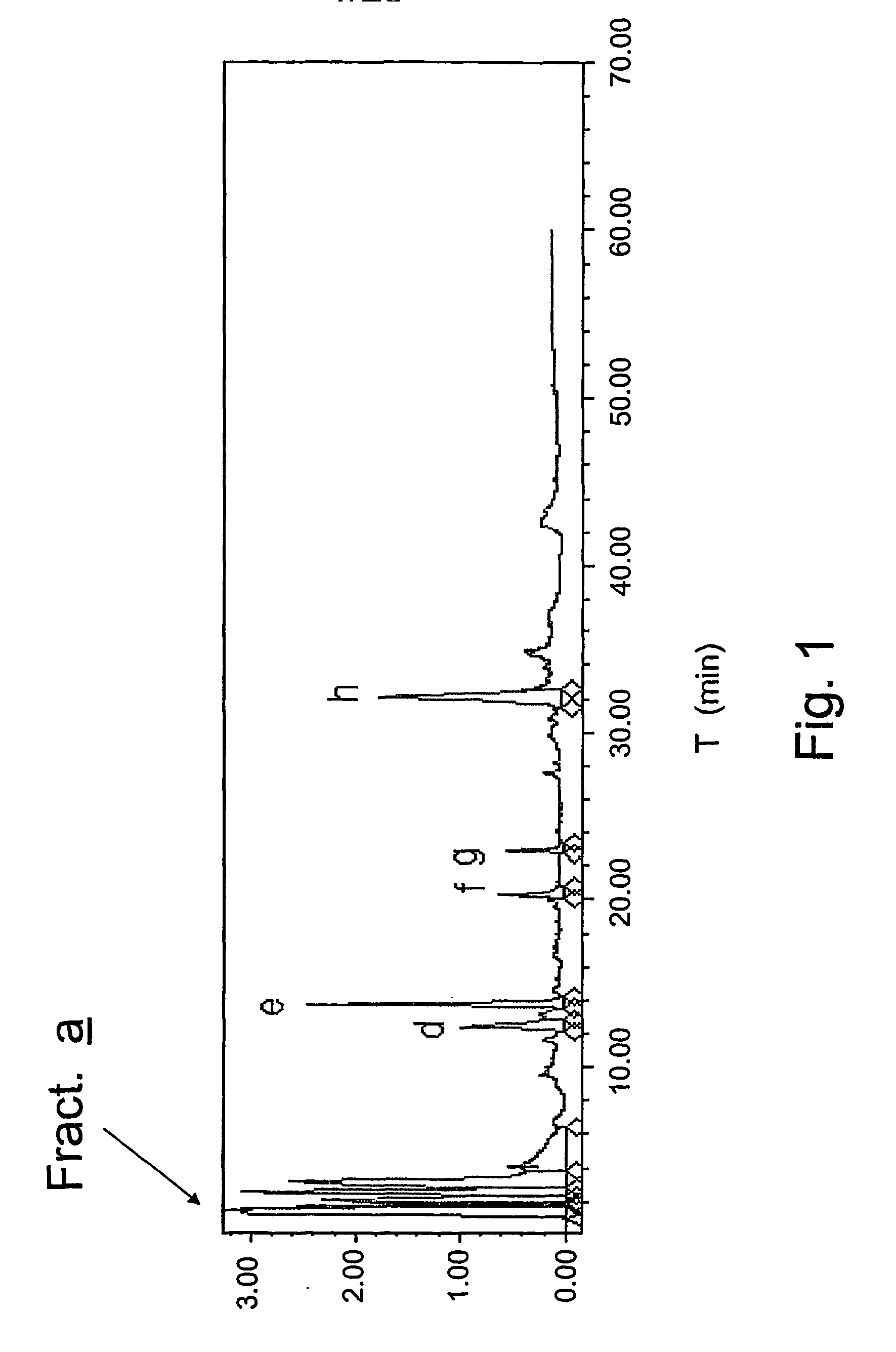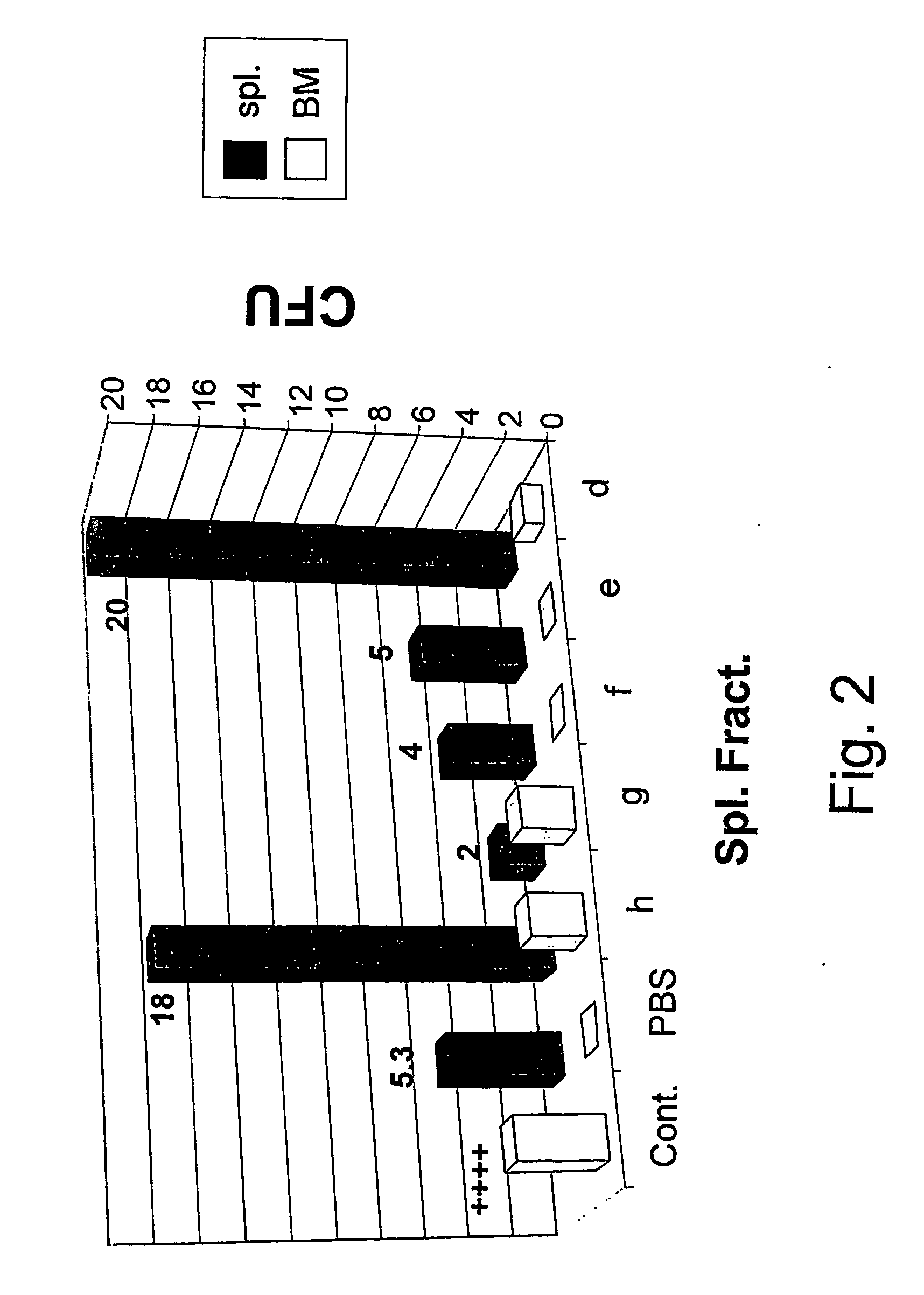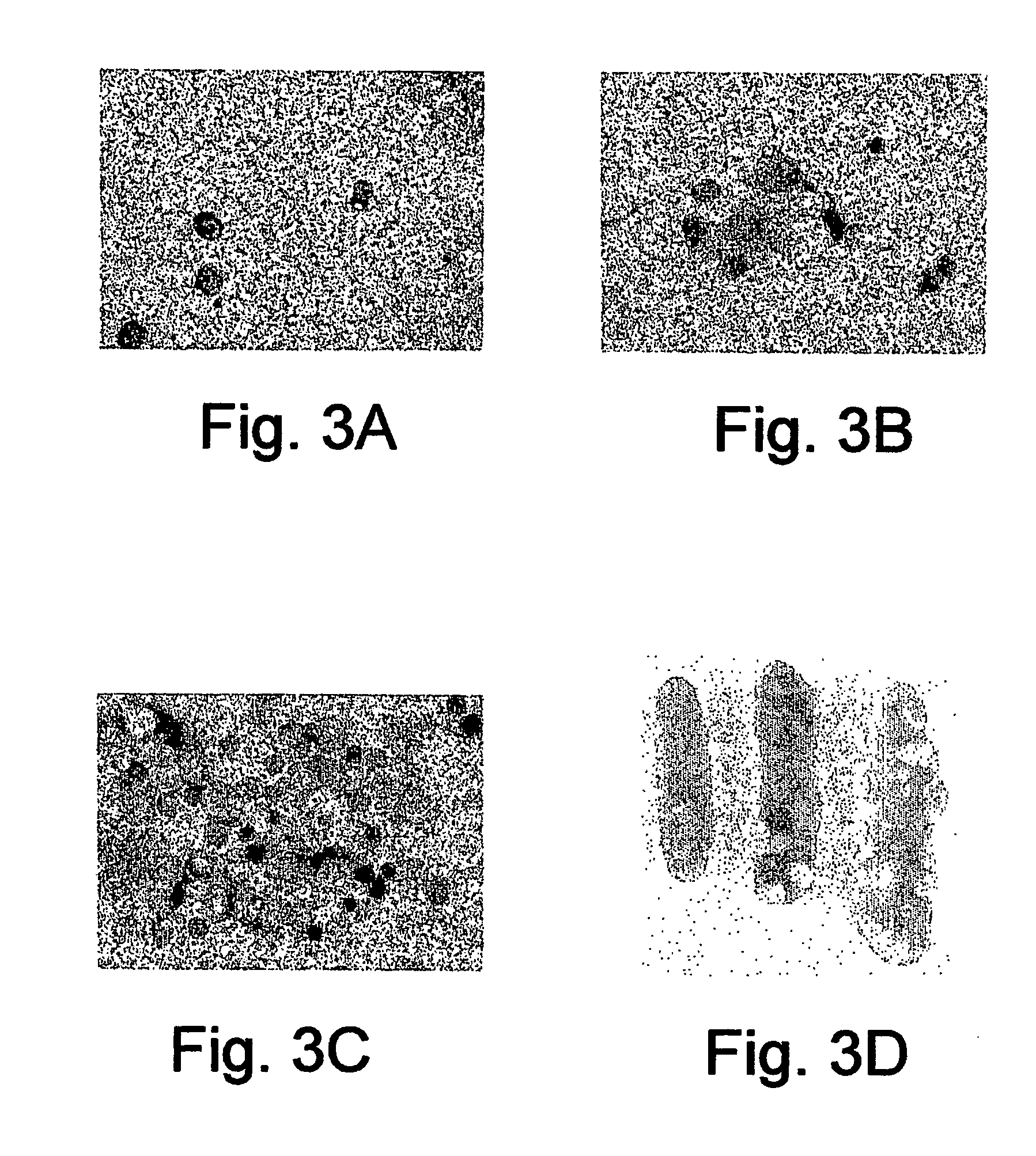Agent derived from tortoise spleen stimulating mammalian hemopoiesis
a technology of proteinaceous agent and spleen, which is applied in the direction of drug composition, peptide/protein ingredient, extracellular fluid disorder, etc., can solve the problems of radiotherapy affecting normal cells as well as cancer cells, provoking life-threatening consequences, and affecting the so as to reduce the detrimental effect of cytotoxic factor
- Summary
- Abstract
- Description
- Claims
- Application Information
AI Technical Summary
Benefits of technology
Problems solved by technology
Method used
Image
Examples
example 1
Biological Activity of the HPLC Fractions Isolated from Spleen Extract
[0194] The tortoise spleen extract HPLC purified fractions (FIG. 1) were tested for their biological activity. Irradiated mice (6 Gy) were injected intraperitoneally with 2 μg of the different fractions. The hematopoietic activity in these mice was examined by the number of spleen endocolonies formation and by bone marrow smear preparations at the 14th day post-irradiation. Fraction d stimulated the growth of spleen endocolonies but showed no influence on the BMC. Injection of fractions e or f resulted in the same lack of effect as seen in the control mice group injected with PBS; no biological influence was observed. Fraction g did not increase the number of the spleen colonies but showed some influence on the BMC. Fraction h exerted activity on both tested parameters: it helped in the repopulation of BM and increased the number of spleen forming colonies (FIG. 2). Further HPLC mass spectra analysis of the frac...
example 2
Physical Characteristic of FTGN Oligopeptide
[0196] Dry freeze long term storage of the FTGN oligopeptide preserved its structural (FIG. 6a) and biological activities. The dry frozen tetrapeptide conserved its physical characteristics after reconstitution in purified water or serum (FIG. 6c) and was stable after four hours of incubation at 37° C.
example 3
Biological Activity of FTGN Tetrapeptide Tested In Vitro
[0197] Bone marrow cells from normal (non irradiated) mice (4-6×106 cells / ml) were incubated for 2 hours with 10μg / ml tetrapeptide; the cells were washed and cloned in cytokine-supplemented methylcellulose semi-solid medium.
[0198] Myeloid colonies formed after two weeks were counted. As seen in FIG. 7a, a short in vitro incubation of bone marrow cells with the tetrapeptide resulted in an increased colony number.
[0199] Similarly, in vivo and ex vivo irradiated cells (4.5 Gy intensity) incubated for 2 hours with 10 μg / ml FTGN tetrapeptide and treated as described above, formed a larger number of colonies compared to cells that underwent the same irradiation treatment but were not brought in contact with the tetrapeptide (SEQ ID: No. 1) (FIGS. 7b and 7c).
[0200] The presence of the tetrapeptide stimulates hematopoiesis and helps restore the growth of damaged cells lineages.
PUM
| Property | Measurement | Unit |
|---|---|---|
| molecular weight | aaaaa | aaaaa |
| time | aaaaa | aaaaa |
| weight | aaaaa | aaaaa |
Abstract
Description
Claims
Application Information
 Login to View More
Login to View More - R&D
- Intellectual Property
- Life Sciences
- Materials
- Tech Scout
- Unparalleled Data Quality
- Higher Quality Content
- 60% Fewer Hallucinations
Browse by: Latest US Patents, China's latest patents, Technical Efficacy Thesaurus, Application Domain, Technology Topic, Popular Technical Reports.
© 2025 PatSnap. All rights reserved.Legal|Privacy policy|Modern Slavery Act Transparency Statement|Sitemap|About US| Contact US: help@patsnap.com



